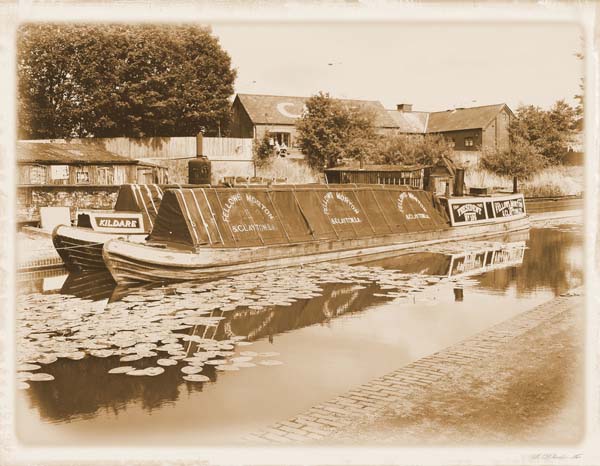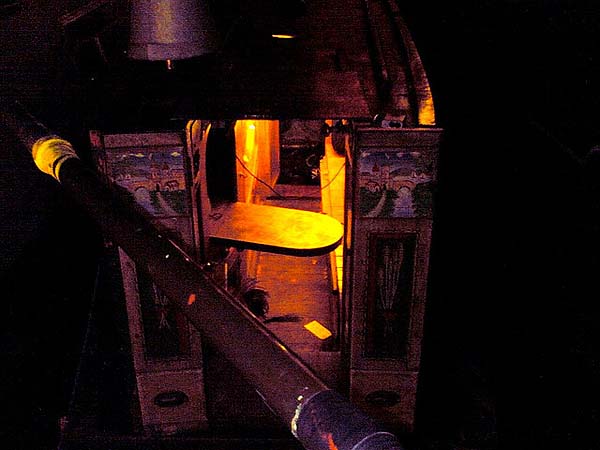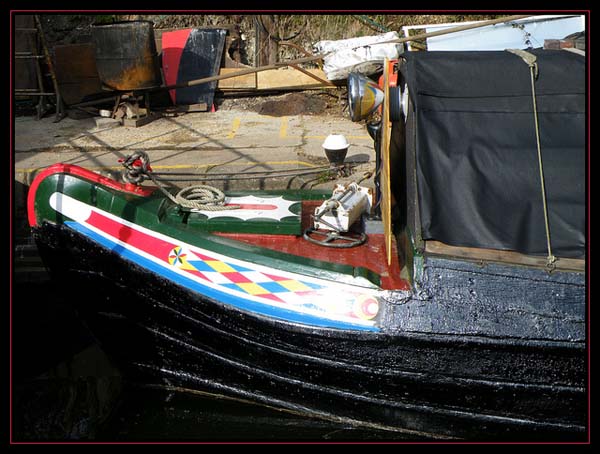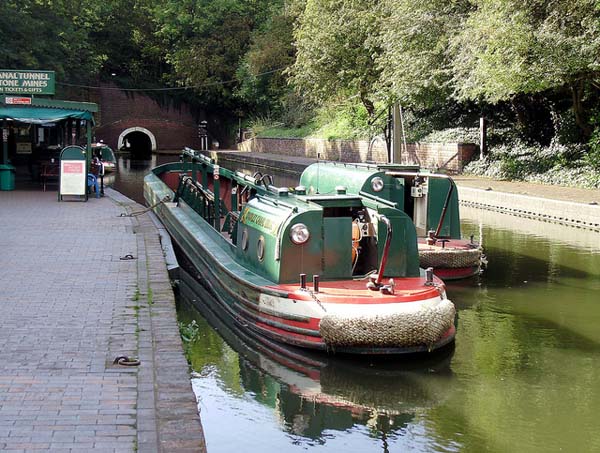Guest Post by Shelley Davis
In England today, narrowboats are floating homes, or holiday cottages, moored on the nation’s inland waterways.
They can range from a small 20ft long day boat to around 80ft long for some liveaboard craft that will never be taken around the whole country, but must always be under 7ft wide to retain the narrowboat name. Inside the boat, this can give up to a luxurious 420 sq ft of space, once you exclude the engine and other ‘service’ areas.

Photo credits – R-P-M
However, historically Narrowboats were working craft, where the majority of the length was dedicated to moving coal to London, chocolate from Birmingham, crockery from the potteries in Staffordshire. This left only up to 10ft of one-room space for living for an entire family with multiple children. Most furnishings were multi functional:

A small wood and coal fired stove for cooking, hot water, and heating. One single bed that doubled as seating, and another double which would be folded across the cabin from where it had been used in the day as a cupboard door. A smaller cupboard door, hinged at the bottom, which could be folded down into a table.

There was no room for a bathroom of any sort. Chamberpots were used, and for washing, a bucket full of water was plenty. Some families had the luxury of a tin bath which could be strapped to the roof. Not just used for washing bodies however, the clothes were also scrubbed clean here and hung up on the roof of a boat or on the canal side if the family had stopped for a while.
Storage too, was at a premium, with cubby-holes made in every possible place to tuck away cleaning materials, eating utensils and necessary papers. Food was bought through the journey as a boat family had no room to grow their own. This was often from the lock-keepers who grew vegetables in their gardens, or the pub-owners who often doubled as shopkeepers for the busy passing trade of the canals.

As opposed to the peaceful bareness of a lot of modern tiny homes, decoration was bright and lavish, each boatman being the proud captain of his ship. The outsides were painted brightly. Not only the owner’s name, but also traditional patterns: roses, castles and harlequin diamonds. The interior walls of the cabin would have been festooned with keepsakes such as painted plates and polished brasses, but also with crochet lace, the traditional boatwoman’s craft. The longer leisure boats today are usually still painted with the traditional paint techniques as a nod to this history.
There are three magazines available in the UK on narrow boats. If you would like to keep up with what is happening on a regular basis you may want to subscribe to one of them. Here are the links:

I really enjoyed this article on narrowboats, both for its historical perspective and current possibilities. Love the old photo at the top of the post.
Thank you Jennifer – there’s so much we can learn from history.
In france we have this kind of boat, we call them “péniche” , there are very expensive.
There is even a museum dedicated to the subject of narrowboats (National Wateways Museum) that is in Ellesmere Port (near Manchester) in the UK. They show a great deal of how people lived on them. Fascinating stuff, really.
I come from the British Midlands, which used to be criscrossed with canals, a very efficient transport system. So glad many of them are being restored and used for leisure and the boats are simply fantastic!!
“Continuous cruisers” live and travel on the canals 100% of the time. Many maintain blogs that give you a glimpse of what life is like “on the cut”. The website above is my favorite blog and it has links to other great blogs as well.
My partner and I own a 40 foot narrow boat. They are very special places to spend time. Sadly to rent a narrow boat it is £1000 a week which makes it to expensive to rent. We bought ours for next to nothing and did it up are selfs. great project and a life time of memories on the thames
god bless
I’m so jealous! I would love to buy one, but in the US, narrowboats simply don’t exist. There are maybe a handful historical boats that book cruises. I would love to have a narrowboat and explore the Mississippi River.
We spend about eight months of the year on our narrow boat. We are currently out cruising the northern canals and rivers. As a small living space a narrow boat tends to be built around good use of the available space. The alternative is a wide beam boat or even a GRP cruiser.
You can find us our cruising blog at http://Narrow-Boat.Com
Mick, Mags, Poppy and Abbey.
I spent many holidays on narrowboats when I was younger. Amongst many great memories (reading on the roof, racing the boat [they’re SLOW], and long chats with my dad as he puffs his pipe) my favorite are of watching the locks work and passing over the Llangollen aqueduct (http://www.llangollen.com/pontcysyllte/pontcysyllte13.jpg ) if you ever find yourself in the area make sure you visit, you can walk across just as easily and it really is breath-taking.
The thing I still find amazing about boating holidays, whether sailing or in a narrowboat is how hard you feel you’ve worked and how little distance you’ve actually travelled. Driving past your “furthest point” on the way home isn’t uncommon.
My sister and I are both full-sized adults now but still enjoy the small spaces on the water when we visit our parents. Just last year we had a surprise holiday with them in a small sailboat in the south of Holland. Sailers are another group of people that love to use their space efficiently and appreciate the beauty of clever design. (I’d much rather spend my time on a perfected sailboat than 6bedroom megacruiser)